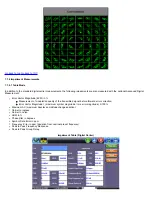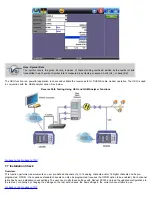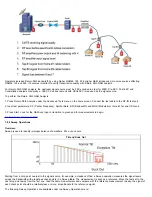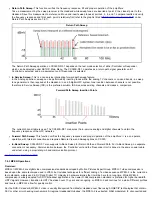
Cable Modem (CM) Connection Procedure and Training Sequence
1. CM scans the Downstream (DS) spectrum for a valid DOCSIS signal (either 64QAM or 256QAM). This can be a time consuming
step if the CM is not on a channel.
2. CM demodulates the DOCSIS signal and looks for a SYNC message.
3. CMTS periodically broadcasts Upstream (US) Channel Descriptors (UCD) over the DS channel, from which a CM learns its
assigned upstream operational frequency.
The CM in turn scans for these UCD messages, which instructs the CM how to configure a burst profile (frequency, modulation, and
burst parameters).
The CM has now established both a US and a DS frequency.
4. CMTS periodically transmits US bandwidth allocation maps (MAP) in shared time slots in the DS direction. The CM looks for these
MAP messages, which list the granted and contended Time Slots (TSs) for US communication.
5. CMTS assigns a temporary Service Identifier (SID) to the CM, which initiates a coarse power ranging and time synchronization
process.
The first Upstream burst that the CM sends is the initial maintenance - the CMTS responds with the Range-Response (RGN-RSP)
message for frequency, power, and timing settings.
6. CMTS periodically sends keep-alive messages to verify link continuity between itself and all CM units in the same domain. When a
CM receives its first keep-alive message, it reverts to a fine power ranging.
7. CM now forwards a bandwidth request to the CMTS, which in turn forwards a grant to the CM, permitting it to forward upstream
information in allocated time slots.
8. CM now makes a DHCP discovery followed by a DHCP request. The CMTS forwards a DHCP acknowledgment from the DHCP
server containing an IP address, a default gateway, the addresses of a TFTP and TOD server, and a TFTP configuration file name.
9. CM now initiates the TOD and TFTP process. From the TFTP server, the CM receives a configuration file containing QoS, security,
applicable frequency assignments and any new software images.
10. CM forwards TFTP configuration file to the CMTS and initiates a registration request. If the configuration file is valid, the CMTS
assigns the CM a permanent SID and registers the CM to online status.
11. Following registration, the CM optionally initiates the activation of the 56-bit DES encryption algorithm to provide security between
the CMTS and itself over the cable plant.
12. CM is now operational and online.
Cable Modem Connection Process 1
Содержание VEPAL CX350S-D3.1
Страница 1: ...CX350s D3 1 e Manual D07 00 102P RevA01 Page 1 of 109 ...
Страница 13: ...Go back to top Go back to TOC CX350s D3 1 e Manual D07 00 102P RevA01 Page 13 of 109 ...
Страница 16: ...Go back to top Go back to TOC CX350s D3 1 e Manual D07 00 102P RevA01 Page 16 of 109 ...
Страница 21: ...Go back to top Go back to TOC CX350s D3 1 e Manual D07 00 102P RevA01 Page 21 of 109 ...
Страница 57: ...Go back to top Go back to TOC 7 8 4 Remote Operations ...
Страница 70: ...Trace Route Result Go back to top Go back to TOC CX350s D3 1 e Manual D07 00 102P RevA01 Page 65 of 109 ...
Страница 76: ...Go back to top Go back to TOC CX350s D3 1 e Manual D07 00 102P RevA01 Page 71 of 109 ...
















































